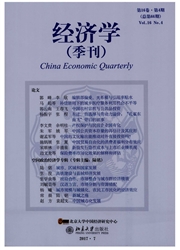

 中文摘要:
中文摘要:
本文利用两部门模型,从理论和实证上分析了城市化、城乡差距与全国居民总体收入差距的关系。研究结果表明,改革开放以来,城市化是导致倒U现象出现的主要原因。首先,城市化的加快使得由城乡人口流动导致的收入差距于2001年开始缩小;其次,城市化意味着低收入农村人口比例的缩小和低收入城市人口比例的增加;最后,城市化促使我国农村内部收入差距拉大的速度放缓。由此,全国总体收入差距将在2006--2009年迎来倒U形曲线的拐点。
 英文摘要:
英文摘要:
Based on a two-sector model, this paper provides both theoretical and empirical analyses on the relationship between urbanization, urban-rural income gap and the overall income inequality in China. Our results show that the change of China's overall income inequality supports the inverse-U hypothesis. Urbanization is the most important cause for this finding. Firstly, the change of the income inequality caused by urbanization has entered the decreasing phase since 2001 ; secondly, urbanization means that the low income rural popula- tion becomes smaller, and the low income urban population becomes larger; thirdly, urbanization has recently begun to reduce the rate of growth of income inequality in the countryside. It is expected that China's overall income inequality would pass the turning point of the inverse-U curve between 2006 and 2009.
 同期刊论文项目
同期刊论文项目
 同项目期刊论文
同项目期刊论文
 期刊信息
期刊信息
